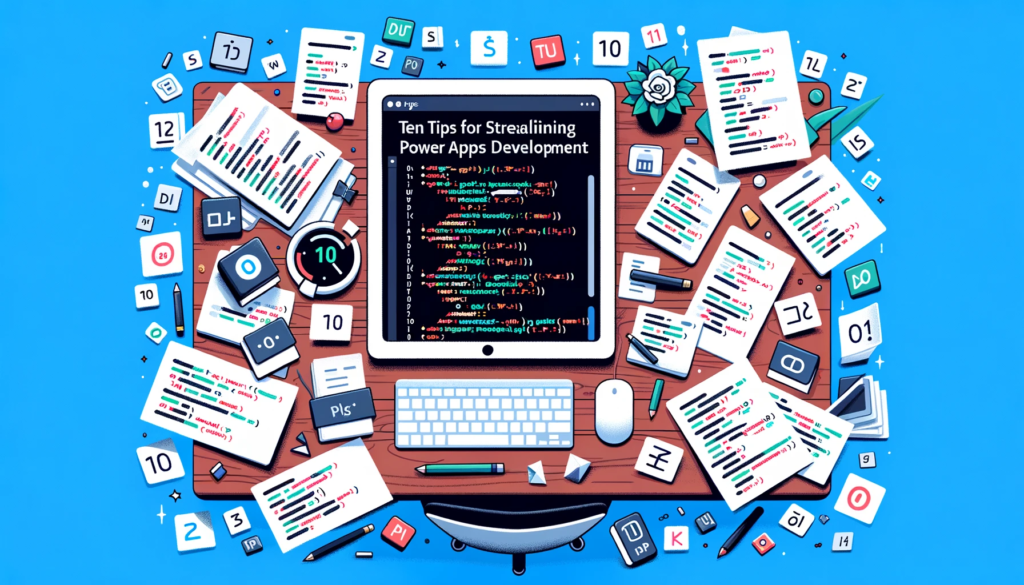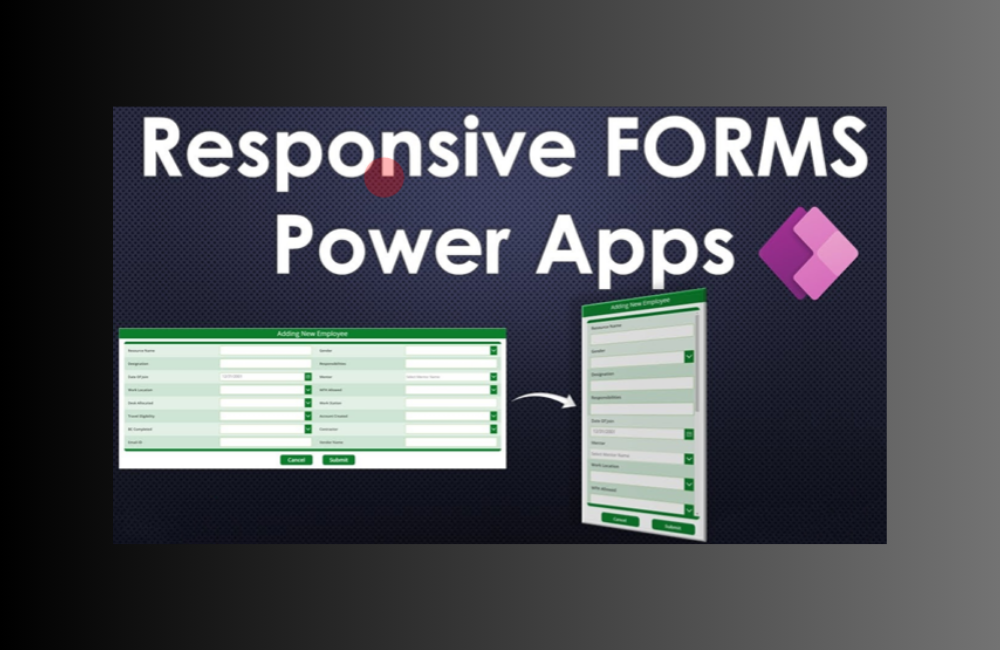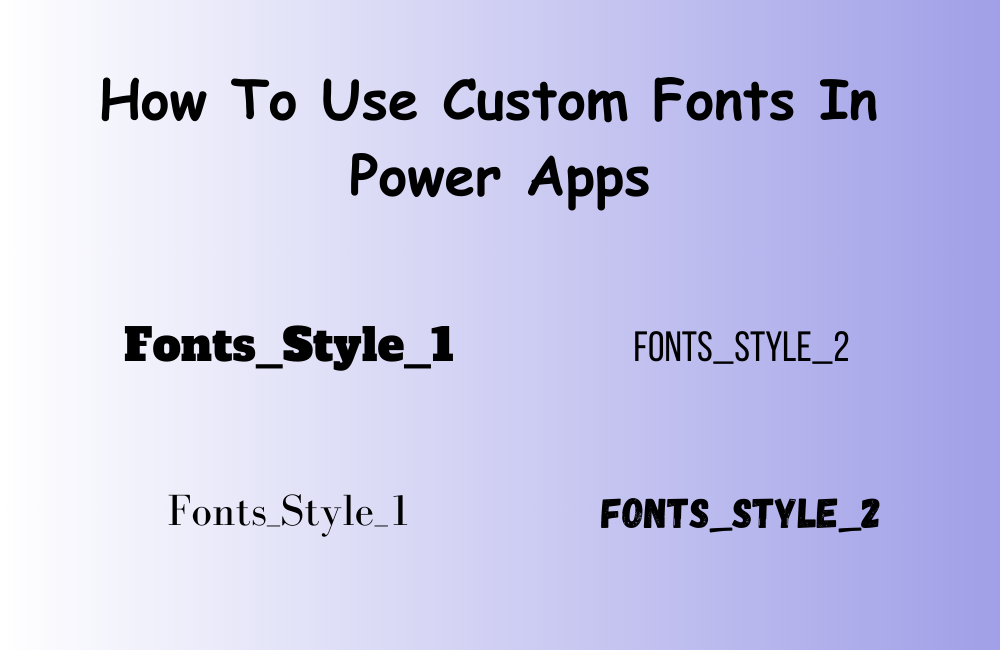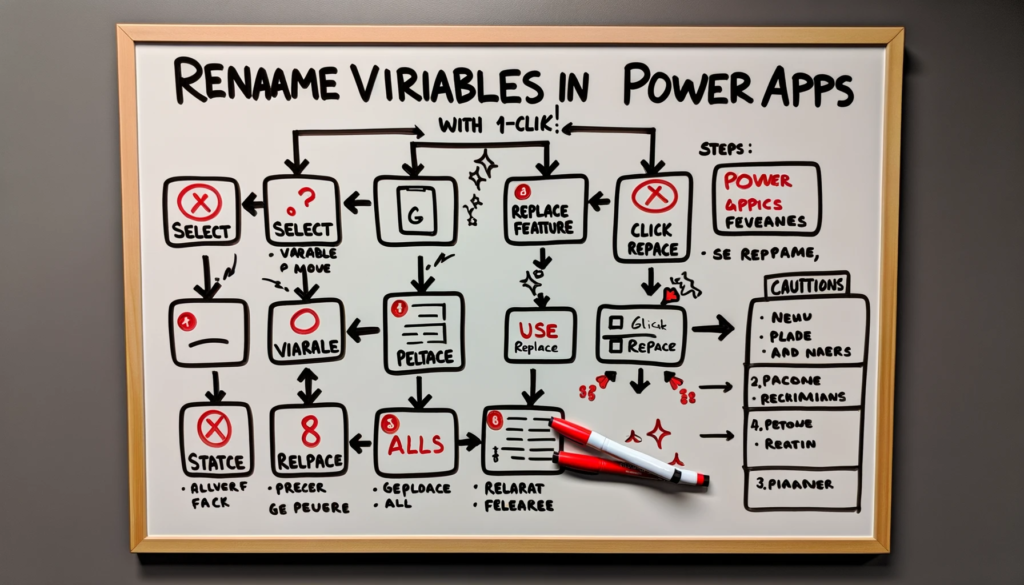Ten Tips for Streamlining Power Apps Development
Overview:
This blog post introduces ten essential tips for streamlining Power Apps development. From enhancing code readability with the WITH function to adopting consistent naming conventions, these best practices aim to create more efficient and clear code structures.
Harness the WITH Function
The Power Apps WITH function enhances code readability. Compare a complex formula without WITH to one employing it. The WITH function condenses complexity into one-time variables, making your code more human-readable.
Reference:With function in Power Apps
Original Example:
// Formula without WITH
Set(ProductivityScore, (Revenue * 0.75) / EmployeeCount)
Example with WITH Function:
// Formula with WITH
WITH(
{ Rev: Revenue, EmpCount: EmployeeCount },
Set(ProductivityScore, (Rev * 0.75) / EmpCount)
)
Explanation:
The WITH function simplifies complex formulas by creating one-time variables for clarity.
Implement Automatic Formatting
Use the formula bar’s format text command to add indentation, spacing, and line breaks to your Power Apps code. Well-formatted code not only improves readability but also helps identify errors swiftly. Consistency in code formatting facilitates collaboration among developers.
Original Example:
Label1.Text = "Hello, World!" & Char(10) & "Welcome to Power Apps."
Formatted Example:
Label1.Text =
"Hello, World!" & Char(10) &
"Welcome to Power Apps."
Explanation:
Automatic formatting adds line breaks and indentation, improving code readability and error detection.
Craft Informative Comments
Power Apps supports line and block comments. Write comments that anyone, including your future self, can understand. Avoid abbreviations and slang. Use comments to clarify complex code segments and provide explanations for lengthy blocks of code. However, keep in mind that comments may need updates as your code evolves.
Original Example:
// Calculate total revenue
TotalRevenue = Sum(SalesData, Revenue)
Commented Example:
// Calculate total revenue
TotalRevenue = Sum(SalesData, Revenue)
Explanation:
Comments should provide meaningful explanations to aid understanding for other developers and your future self.
Flatten Nested IF Functions
Minimize the use of nested IF functions to enhance code clarity. Complex nested IFs can be challenging to decipher. Opt for a flat structure whenever possible.
Reference: If and Switch functions in Power Apps
Original Example:
If(Condition1, "A", If(Condition2, "B", "C"))
Commented Example:
Switch(
Condition1, "A",
Condition2, "B",
true, "C"
)
Explanation:
Flattening nested IFs makes code easier to understand by replacing complex nesting with a simpler structure.
Adopt a Naming Convention
Consistency is key. Employ a naming convention for controls and variables. Control names should reflect their type, screen location, and purpose. Variables should adhere to a standard format that includes their scope and intent.
Naming Convention Example:
Txt_CustomerName
Lbl_ProductTitle
Variable_OrderTotal
Explanation:
Consistent naming conventions for controls and variables improve code organization and understanding.
Standardize Text String Concatenation
When joining text strings and variables, choose one method and stick with it. Whether you prefer the “&” operator, the Concatenate function, or $-String notation, maintain consistency in your approach.
Example:
"Hello, " & UserName & "! Welcome to the App."
Explanation:
Choose a consistent method for joining text strings and variables for clarity.
Follow Logical Operator Consistency
While Power Apps offers multiple ways to express logical operations, choose one that aligns with your preference and stick to it. Be consistent with logical operators like “And,” “And(),” or “&&.”
Example:
If(Condition1 && Condition2, "True", "False")
Explanation:
Consistency in using logical operators like “&&” enhances code readability.
Simplify True/False Statements
Avoid using an IF statement when the result is a straightforward true or false value. Opt for a direct logical comparison to simplify your code.
Original Example:
If(Weather = "Sunny", true, false)
Simplified Example:
Weather = "Sunny"
Explanation:
Simplify code by avoiding unnecessary IF statements for true or false values.
Streamline Boolean Evaluations
A boolean value can be used directly as an argument in an IF function, eliminating the need for a separate logical comparison.
Original Example:
If(IsEmployee, "Authorized", "Unauthorized")
Explanation:
Boolean values can be used directly to improve code readability.
Embrace the Self Operator
For swift code comprehension, utilize the Self operator to access properties of the current control instead of typing out the full control name.
Original Example:
Label1.Text = ThisItem.ProductName
Self Operator Example:
Label1.Text = Self.ProductName
Explanation:
Using the Self operator simplifies accessing control properties.
Conclusion:
By implementing these ten best practices, developers can significantly enhance their Power Apps development process. Not only does this lead to more readable and efficient code, but it also fosters a more enjoyable development experience.






